2021 Honda Accord vs 2021 Toyota Camry: Compare Cars
The mid-size sedan segment has never been better. As former bestsellers dwarfed by crossover SUVs, the 2021 Honda Accord and 2021 Toyota Camry demonstrate the best of what’s left in a strong class ranging from the new Kia K5 to the always good Subaru Legacy.
The Toyota Camry remains the bestselling sedan so far in 2021, nearly doubling the volume of the Honda Accord. Both can be had as hybrids hovering in the 50-mpg range, but the Camry offers more variety. As in other contemporary Honda sedans, the Accord optimizes space and has an alluring fastback look cribbed from European tourers.
If you haven’t dipped into the crossover craze or need a break, these mid-size sedans should be at the top of your list—each for different reasons.
Toyota heard complaints of dull designs and responded with the best-looking Camry to date, with a long nose, short rear, and an X-wing grille headed by squinting headlights overlooking a hungry lower maw. The interior embodies this confluence of angles, with a two-tone layered dash that melds into the center console. In a word, the Camry looks aggressive, especially in XSE and TRD performance models.
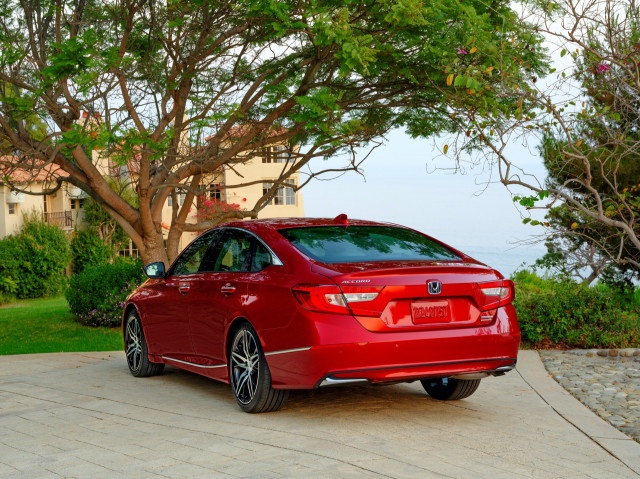
2021 Honda Accord Hybrid
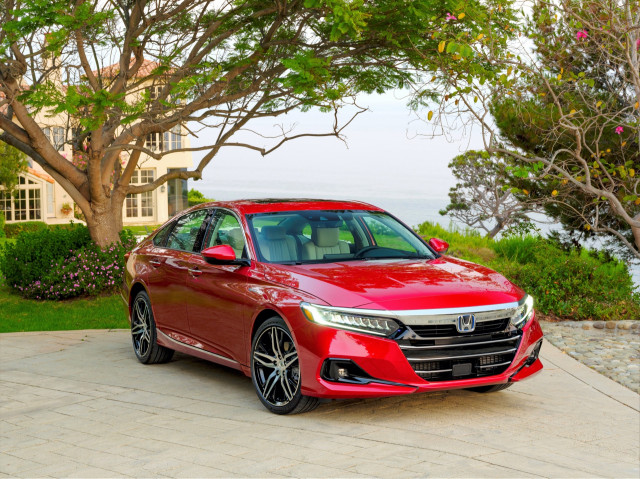
2021 Honda Accord Hybrid
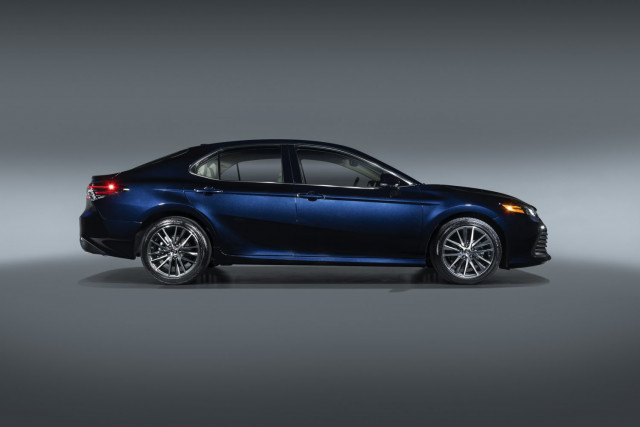
2021 Toyota Camry
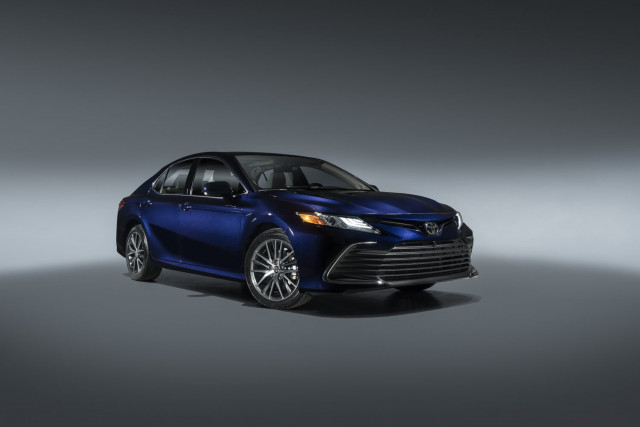
2021 Toyota Camry
Honda softens those sharp edges and curves the Accord into something more stately. It too has a long nose and short overhangs, but adds a racy roofline that rounds into the decklid like a fastback even though it has a proper trunk. It’s a real swell looker. The inside sacrifices stateliness for something more understated but no less attractive. An electronic gear selector opens up more room in the console than the mechanical one in the Camry, and points to the Accord’s key differentiator: interior space.
There’s nearly 3.0 cubic feet more passenger volume and 2.4 inches more leg room in back than the Camry, and the Accord has1.6 cubic feet more in the trunk, amounting to nearly 17 cubes. The Camry has nearly an inch more head room, but the larger door pockets and less cramped console of the Accord give it an edge. Four passengers fit comfortably in either, with a middle seat available in a pinch. The 60/40-split rear seats open up for easy access to the trunk, so you only miss the crossover equivalent’s verticality.
What you won’t miss is a crossover’s tendency to lumber down the road and lean into turns. Both sedans handle well and flex suspensions tuned to driving and not crossing over. The Accord’s balanced chassis and precise steering take it a step nearer its European touring’s character than most Camrys. Sold only with front-wheel drive, the Accord comes with three engine choices, including a base 192 hp 1.5-liter inline-4 with a continuously variable automatic transmission tuned more for efficiency than power. If efficiency is the priority, we’d recommend the hybrid with its inline-4 and twin-motor setup that makes 212 hp. It’s more responsive and it gets 48 mpg combined compared to 33 mpg combined on the base Accord. The 252-hp 2.0-liter turbo-4 with a 10-speed automatic transmission on Sport and Touring trims harmonizes all the good driving characteristics inherent in the Accord, but it can be expensive and those large 19-inch wheels ride a bit harsher and reduce fuel economy.
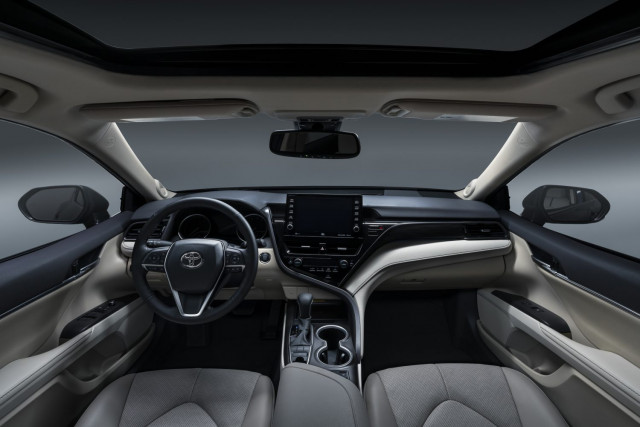
2021 Toyota Camry
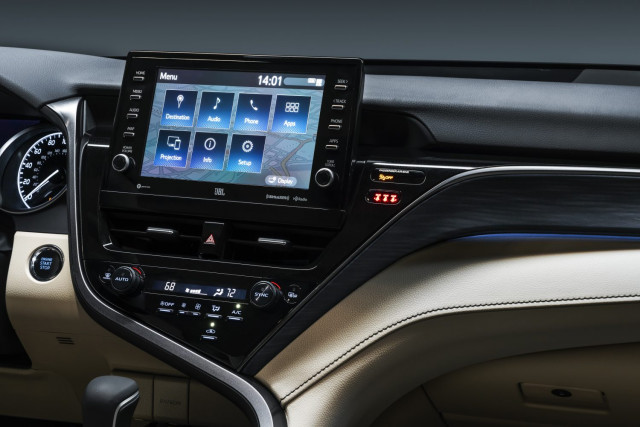
2021 Toyota Camry
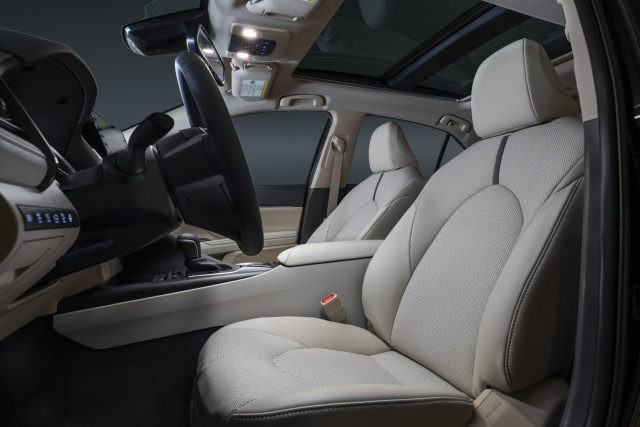
2021 Toyota Camry
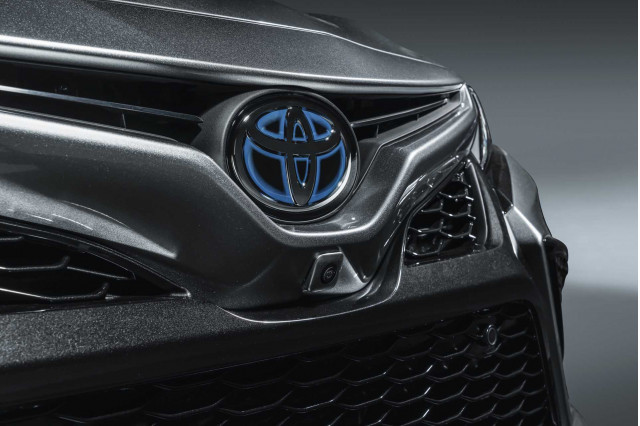
2021 Toyota Camry Hybrid XSE
It should be no surprise that the maker of the Prius also makes a more efficient hybrid sedan. The Camry Hybrid LE returns a Prius-like 52 mpg combined that’s unmatched by mid-size sedans without a plug. There are other choices, including front or all-wheel drive, on the Camry. Its base 203-hp 2.5-liter inline-4 uses an 8-speed automatic transmission that is perfectly adequate, as is the 32 mpg combined that’s a hair shy of the base Accord. We’re tempted by the responsive, potent, 301-hp 3.5-liter V-6 offered with the XSE and XLE trims. Camrys with an S in their trim name have sportier handling, better traction, and more precise steering than the other models made for comfort, which is why the V-6 works better in the XSE than the XLE. The TRD Camry model firms up the suspension, lowers the ride height, and bolsters the brakes, but it’s an odd choice here, one that’s neither Camry nor sport sedan. Whatever it is, it cannot be called boring.
Equally interesting, or at least impressive, is the long list of standard safety and convenience features offered on both cars, as if automakers keep adding more goodies to keep shoppers from straying to slightly more expensive crossover equivalents, such as the Honda CR-V and Toyota RAV4.
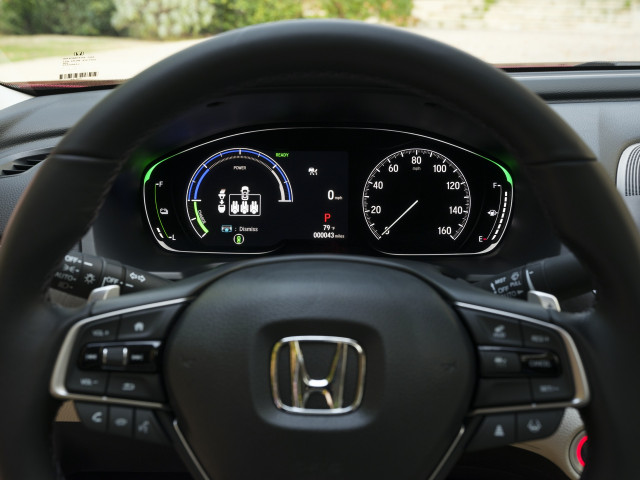
2021 Honda Accord Hybrid
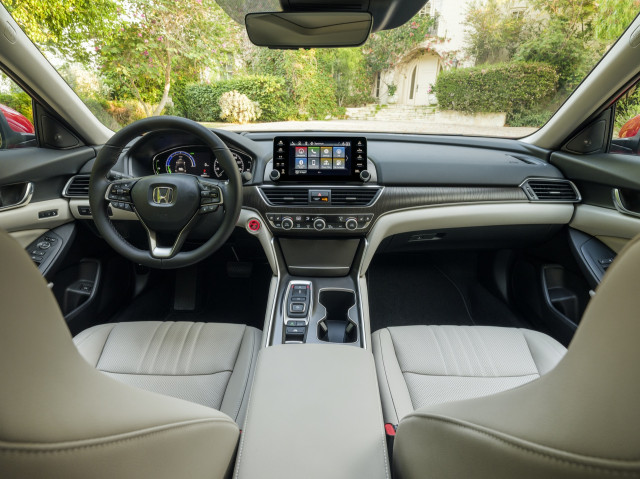
2021 Honda Accord Hybrid
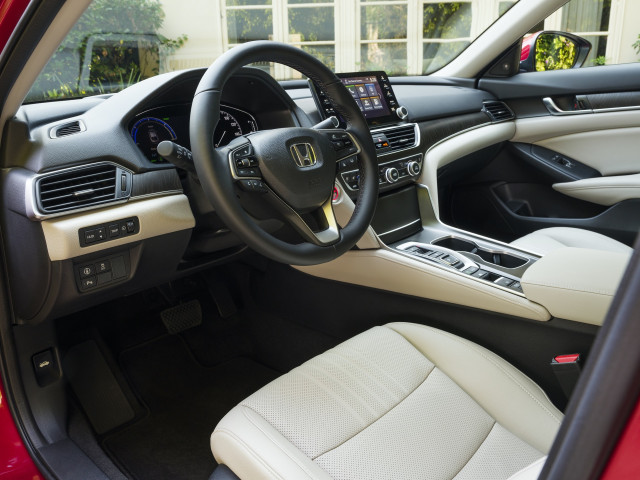
2021 Honda Accord Hybrid
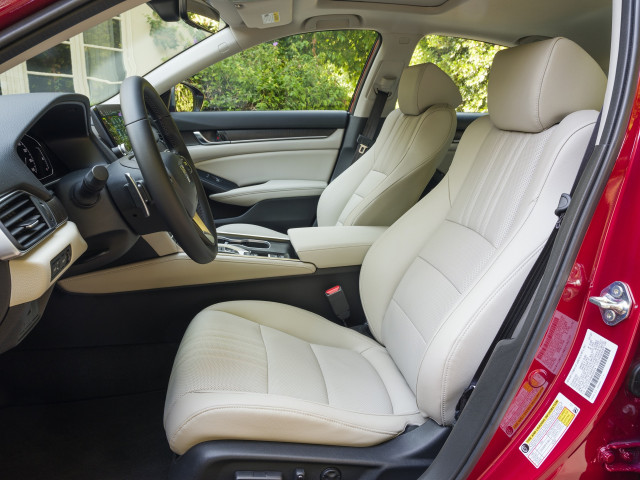
2021 Honda Accord Hybrid
The Accord gets a slight edge for infotainment with its standard 8.0-inch touchscreen with Apple CarPlay and Android Auto compatibility, compared to the 7.0-inch toucher on the Camry; and the Accord’s font, layout, and interface feels fresher. The base Accord is about $50 less, starting under $26,000, and the Accord Hybrid costs $700 less than the Camry Hybrid at $27,565. At the other end of the scale, the Accord Touring outbids the Camry XSE V6 by about $1,400 to cost just below $38,000. The Accord Hybrid EX is our pick, with its wireless smartphone integration, wireless charger, remote start, keyless lock, and other goodies for $31,515. For a more fun-to-drive hybrid, the Camry SE Hybrid costs less than $30,000 and has more performance bite.
It’s a tough call between the two, one that comes down to feel more than logic, especially since both models earn stellar crash test ratings from the IIHS and the NHTSA. They also come with automatic emergency braking, active lane control, adaptive cruise control, and automatic high beams.
Both sedans earn a high TCC Rating of 7.0 out of 10. The Accord gets the edge when it comes to driving feel and looks, but the beholder says you can’t go wrong with either. Especially if you prefer feel over utility.

